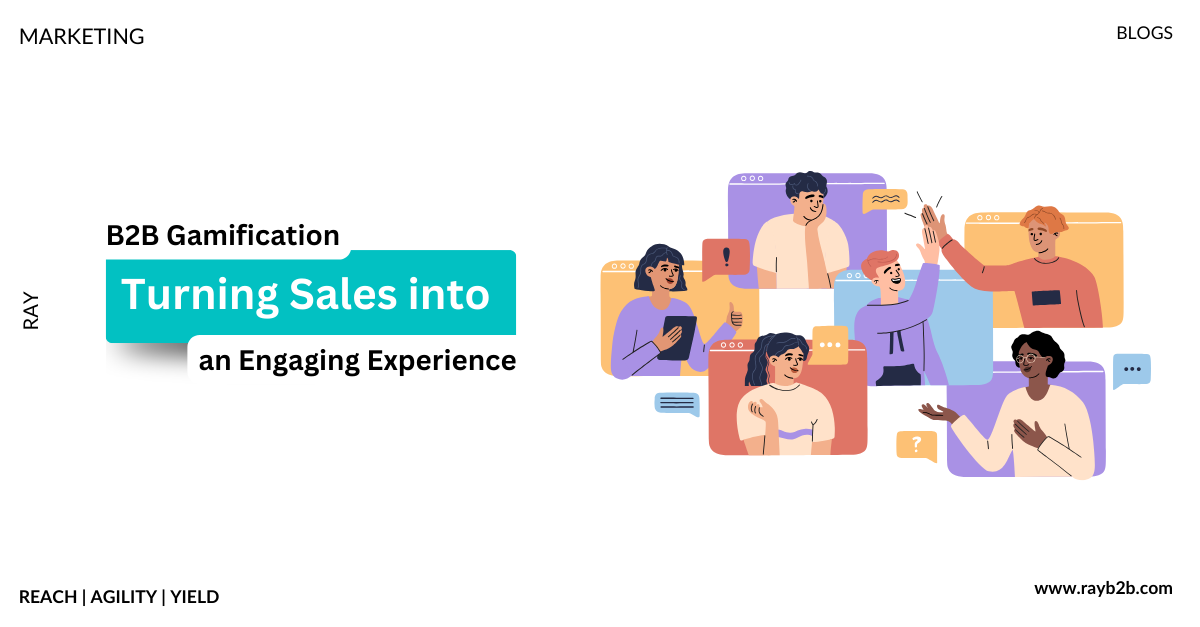
The Power of Gamification in B2B Sales
In the dynamic landscape of B2B sales, businesses are continually seeking innovative ways to boost engagement and drive revenue. One such approach that is gaining significant traction is gamification. By integrating game mechanics into sales processes, B2B organizations can turn mundane tasks into exciting experiences, motivating sales teams and fostering customer engagement.
In this blog, we delve into the concept of B2B gamification, exploring its benefits, implementation strategies, and real-world examples.
Understanding B2B Gamification
At its core, B2B gamification involves applying game elements, such as competition, rewards, and progress tracking, to sales processes. By infusing elements of play into traditionally serious business activities, companies aim to boost employee motivation, productivity, and ultimately, sales performance. Whether through leaderboards, badges, or challenges, gamification taps into innate human desires for achievement and recognition, driving desired behaviors among sales teams.
Benefits of B2B Gamification
Enhanced Motivation
Gamification injects a sense of fun and excitement into sales activities, motivating sales representatives to strive for excellence. By transforming tasks into enjoyable challenges, employees are more likely to remain engaged and focused on achieving their targets.
Improved Performance
By introducing elements like rewards and recognition, B2B gamification incentivizes sales teams to surpass their goals. Whether through bonuses, badges, or public acknowledgment, recognizing accomplishments reinforces desired behaviors, driving continuous improvement.
Enhanced Collaboration
Gamification encourages collaboration and teamwork among sales professionals. By fostering healthy competition and team-based challenges, organizations can create a supportive environment where individuals work together to achieve common objectives.
Data-Driven Insights
Gamification platforms often provide valuable insights into employee performance and customer interactions. By tracking metrics such as sales conversion rates, customer engagement, and participation levels, businesses can identify trends, areas for improvement, and opportunities for optimization.
Implementing B2B Gamification Strategies
Set Clear Objectives
Define specific goals and objectives for your gamification initiative. Whether it’s increasing sales, improving customer satisfaction, or enhancing employee engagement, clarity of purpose is essential for driving meaningful results.
Choose Relevant Metrics
Identify key performance indicators (KPIs) that align with your business objectives. Whether it’s revenue generated, customer retention rates, or sales pipeline growth, selecting the right metrics ensures that your gamification efforts remain focused and measurable.
Select Appropriate Game Mechanics
Tailor game mechanics to suit your organization’s culture and objectives. Whether it’s points, badges, leaderboards, or challenges, choose elements that resonate with your sales teams and encourage desired behaviors.
Provide Meaningful Rewards
Offer rewards that motivate and incentivize sales professionals to excel. Whether it’s monetary bonuses, recognition awards, or career advancement opportunities, ensure that rewards are aligned with individual and organizational goals.
Promote Transparency and Fairness
Maintain transparency in your gamification program to foster trust and credibility among participants. Ensure that rules, criteria for earning rewards, and performance metrics are clearly communicated to all stakeholders.
Encourage Continuous Feedback
Solicit feedback from sales teams to continuously refine and improve your gamification strategy. By listening to employee input and addressing concerns, you can ensure that your gamification efforts remain relevant and effective.
Real-World Examples of B2B Gamification Success
Salesforce’s Trailhead
Salesforce’s Trailhead platform gamifies learning and skill development for its users. Through a system of badges, points, and leaderboards, Salesforce incentivizes users to complete training modules and earn certifications, driving engagement and proficiency among its user base.
SAP’s Community Network
SAP’s Community Network employs gamification to encourage collaboration and knowledge-sharing among its users. Through a system of points, badges, and rankings, SAP rewards users for contributing valuable content, answering questions, and engaging with the community, fostering a culture of expertise and innovation.
Microsoft’s Dynamics 365
Microsoft’s Dynamics 365 incorporates gamification features to incentivize sales teams and drive performance. By tracking metrics such as sales pipeline velocity, revenue generated, and customer satisfaction scores, Dynamics 365 enables organizations to reward top performers, identify coaching opportunities, and optimize sales strategies effectively.
Conclusion
B2B gamification offers a powerful tool for enhancing engagement, motivation, and performance within sales organizations. By leveraging game mechanics to transform sales activities into engaging experiences, businesses can drive meaningful results and foster a culture of excellence and innovation. With careful planning, implementation, and refinement, B2B gamification has the potential to revolutionize the way companies approach sales and customer engagement in the digital age.







